I have a fascination with historic architecture. That is what launched me on in my career path. There is just something about a well-designed building that strikes awe in me. I feel it when I enter the state Capitol Building here in Harrisburg or when I walk through a quaint Lancaster City neighborhood. It amazes me that an architect inspires so much with his work.
I can’t begin to put down in words the feeling that visiting Founder’s Hall at Girard College (PASHPO Key Number 001373) in Philadelphia recently gave me. Seeing the building in pictures and historic postcards did little to prepare me for the in person experience.
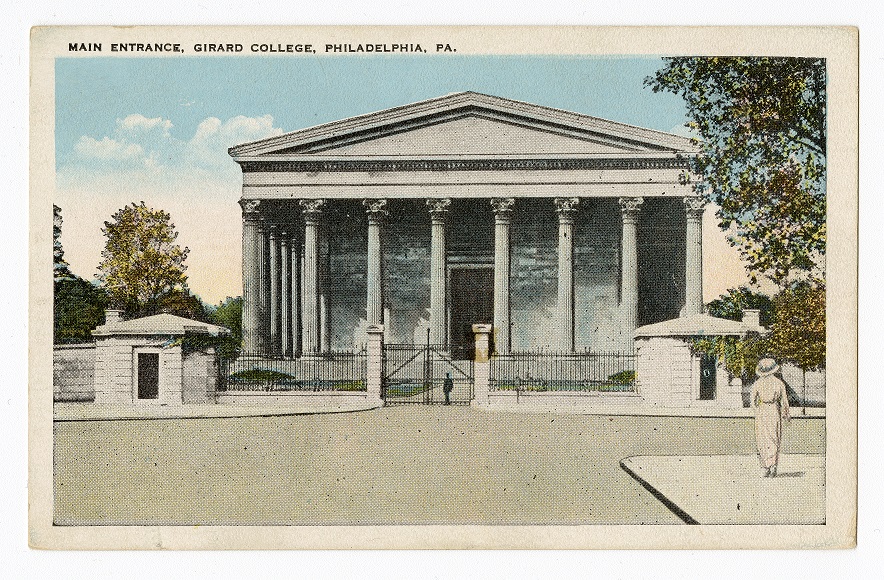
For the benefit of readers who might not be familiar with Founder’s Hall or Girard College, the Greek Revival-styled building is Thomas Ustick Walter’s imposing masterpiece that stares down Corinthian Avenue towards downtown Philadelphia.
Founder’s Hall Amazing History
Upon his death in 1831, Stephen Girard left a fortune of more than $6 million to the City of Philadelphia to establish a school for needy children. His will provided the school with an unprecedented construction budget that attracted America’s finest architects in the first design competition to draw a truly national participation.
Thomas Ustick Walter (1804-1887) submitted the winning entry. A bricklayer’s son who studied under William Strickland (1788-1854) and John Haviland (1792-1852), he would later become the architect of the wings and dome of the U.S. Capitol and a founding member of the American Institute of Architects (AIA).
When completed in 1847, Founder’s Hall was quickly recognized as Walter’s undisputed masterpiece and the fullest, most precise expression of Greek Revival architecture in America. Built entirely of masonry and cast iron with a marble face, the monumental structure contains 42,000 square feet, divided evenly over three full stories, and it is surrounded by a full Corinthian peristyle.
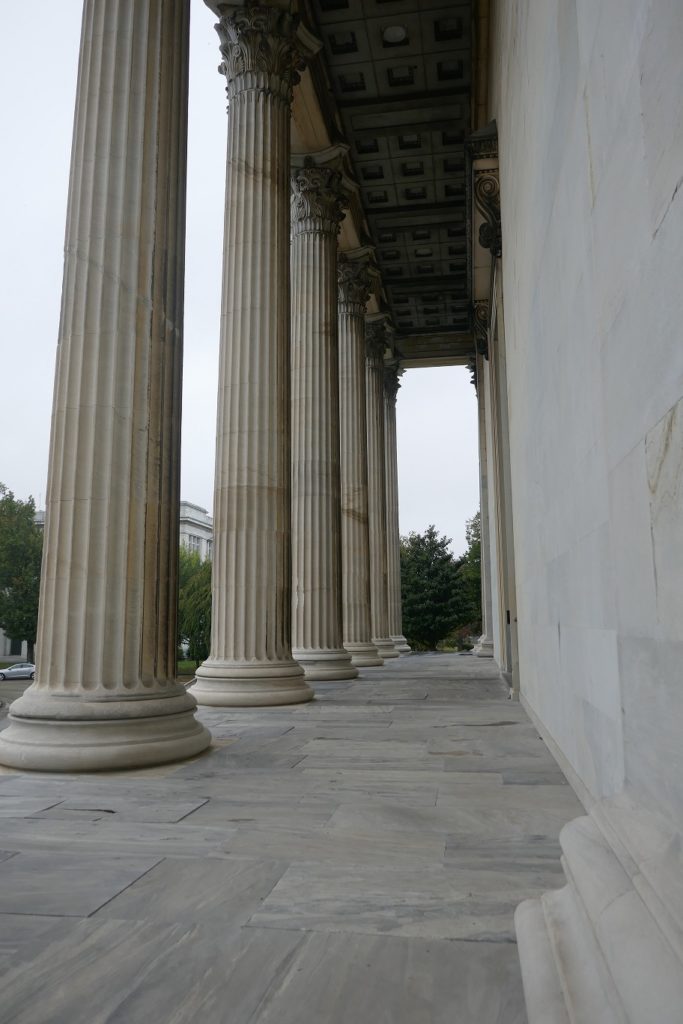
Founder’s Hall served as the school’s first classroom space; it also housed the school’s first chapel and library. Today Founder’s Hall contains a museum that preserves and interprets historical collections associated with Stephen Girard, Girard College, and the architecture of the landmark building itself.
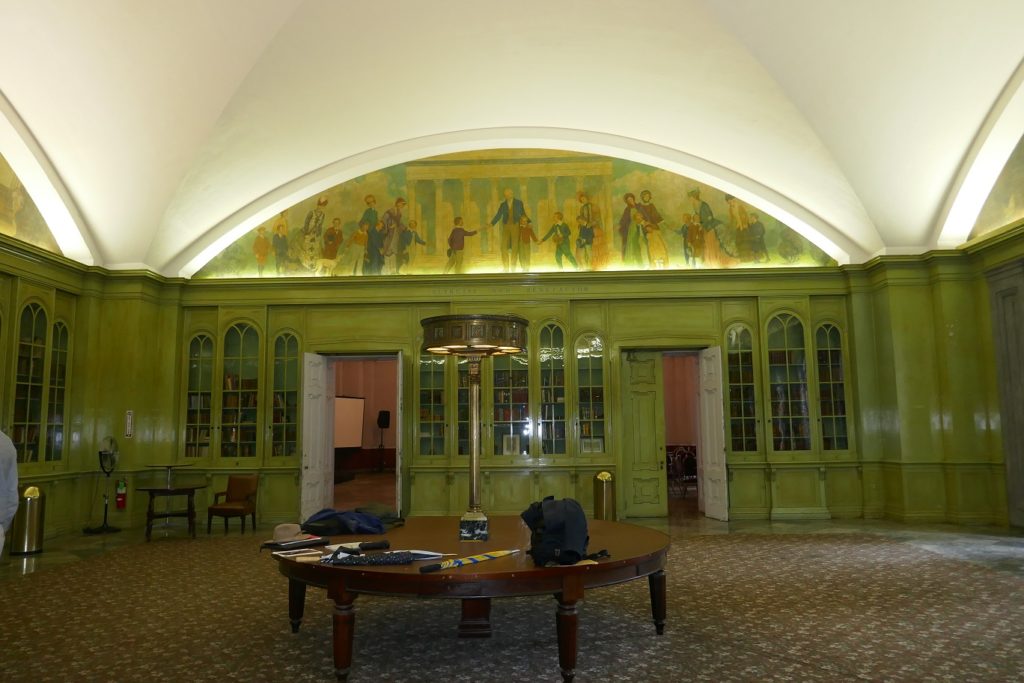
Included in the permanent exhibit was a fascinating photograph that showed Founder’s Hall and its somewhat neighbor, Eastern State Penitentiary in Philadelphia’s undeveloped nineteenth century landscape.
Recognition of Founder’s Hall
Founder’s Hall was declared a National Historic Landmark in 1969. In 1999, it was recognized as the Philadelphia AIA’s Landmark Building of the Year. In 2016, Girard College won a 2016 Grand Jury Award from the Preservation Alliance of Greater Philadelphia for the restoration of the majestic Founder’s Hall doors.
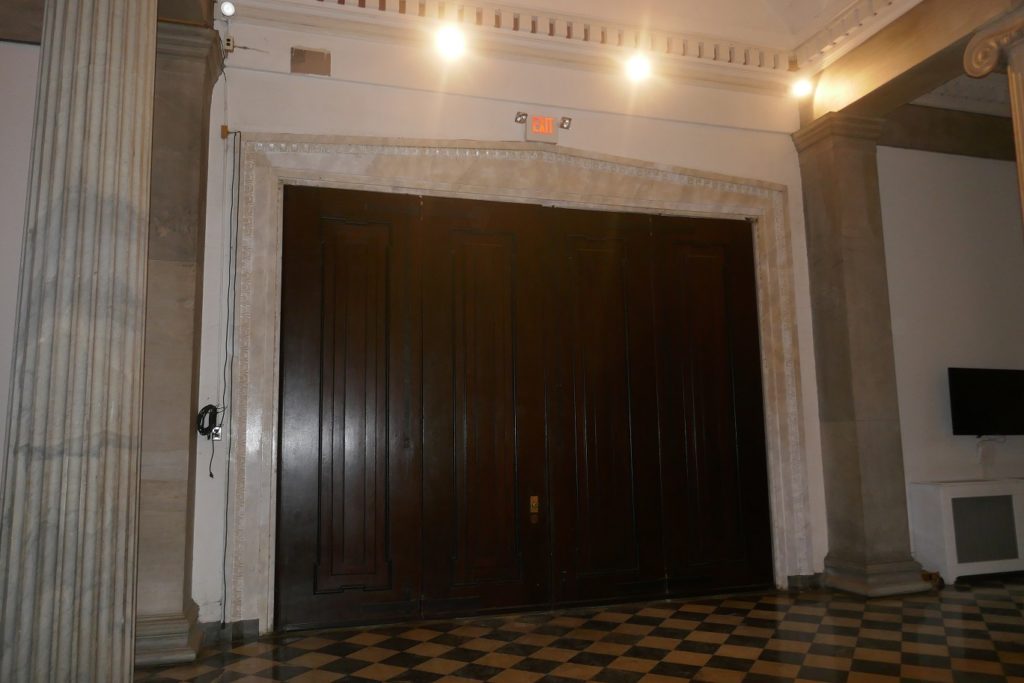
As you may imagine, maintaining this masterpiece is not for the faint of heart. Given the monumental scale of the structure and its needs, costs for restoring the building envelope alone substantially exceed Girard’s and local community’s capacity.

But Girard College’s consistent community support and philanthropy has leveraged some impressive outside grant funding too. Girard received a $544,000 Save America’s Treasures grant from the National Park Service in 2005 for roof replacement (then the 2nd largest grant to a Pennsylvania site in the program’s history, after Frank Lloyd Wright’s Fallingwater in Fayette County).
Leveraging the Keystone Grant Program, too
The Pennsylvania Historical and Museum Commission is a consistent funding partner too through the Keystone Historic Preservation Grant program. In addition to supporting the roof replacement project, Keystone funding addressed the critical conservation concern: restoration of the floor-to-ceiling windows and exterior railings.
I should mention that these are not your typical window.
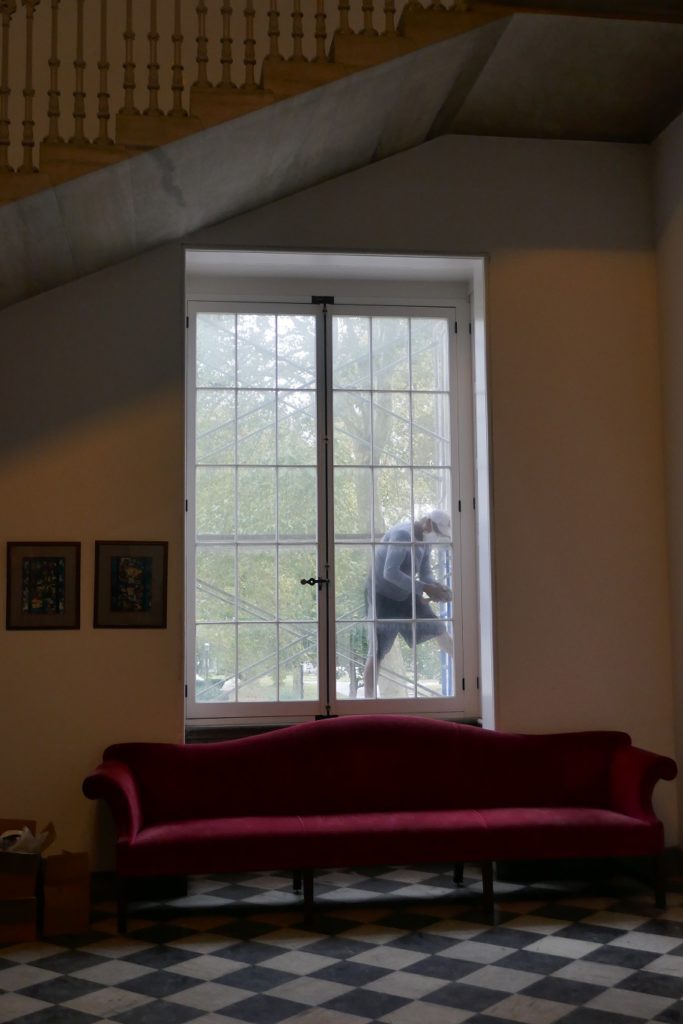
In good preservation practice, Girard College commissioned a Window Assessment in 2008 by Vitetta Architects to investigate the condition of the windows and design their restoration methodology. While many of the building’s 170-year-old windows survive “in remarkably good condition” (Vitetta, 2008), damaged and deteriorated wood, numerous layers of overpaint, and missing or deteriorated hardware means that they cannot close tightly or be opened and closed reliably; in some cases, hardware can no longer hold on to damaged wood and untreated windows have blown open in strong winds.
The inability to manipulate the shutters also hinders staff’s ability to show and interpret the architecture of the exterior portico for visitors. All the second-floor windows also have notable exterior iron railings, an early use of cast iron in American architecture. These massive (400 lbs. each) railings have layers of flaking paint and rust, which obscure their fine architectural detail work.
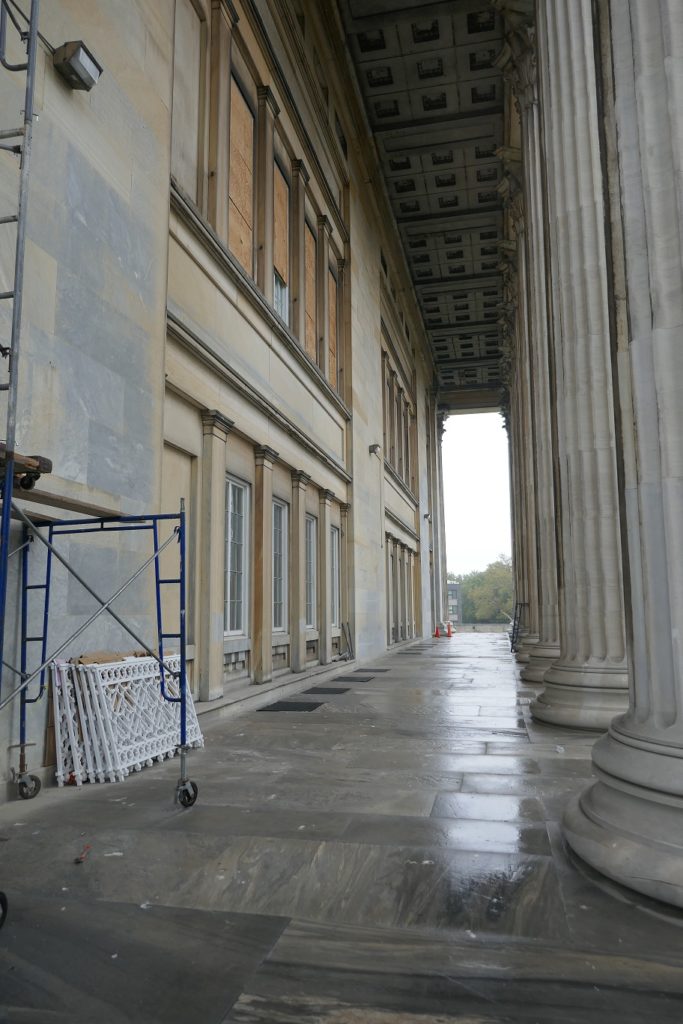
Currently embarking on Phase Four of a five phase project, we visited while the restoration of the ten monumental windows on the east elevation was underway. Milan Church Restoration, the contractor, did the following:
- each casement sash is removed and transported offsite for disassembly, repair, refinish;
- hardware is removed, repaired, realigned, lubricated with new components refabricated;
- existing frames repaired and refinished in place, protecting surrounding masonry and surfaces; and
- the original cast iron decorative exterior railings stripped, repaired and refinished.
It was remarkable to see the project first-hand.
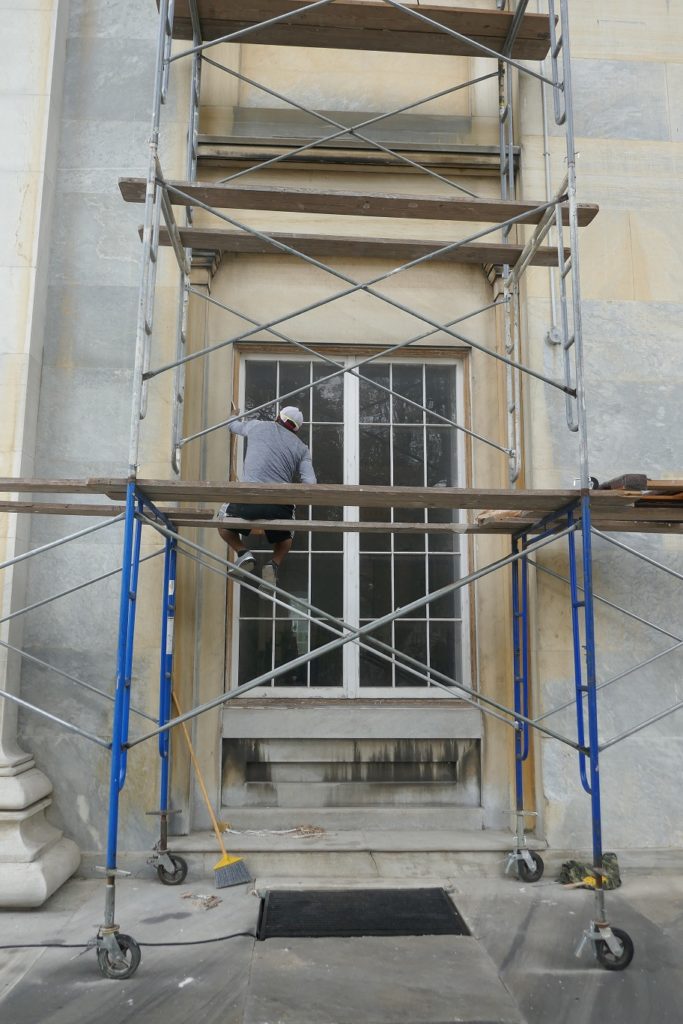
Girard College is a true community resource. Since classes began on January 1, 1848, the school provided entirely free residential education for more than 22,000 children from financially disadvantaged backgrounds where at least one parent is absent. Founder’s Hall is the architectural centerpiece of this remarkable institution. Founder’s Hall engages Girard students through tours, curriculum-linked programs, research assistance, student worker and docent opportunities, and as a venue for student events. It serves Girard alumni and their descendants as a focus of memories, a venue for reunions, and with archival assistance
And Founder’s Hall is a resource for its surrounding neighborhood and institutions, working closely with Fairmount Community Development Corporation, Masterman School, and Eastern State Penitentiary. It is a key venue for city-wide events, such as the Martin Luther King Day of service. It was quite the active place on the day of our visit.
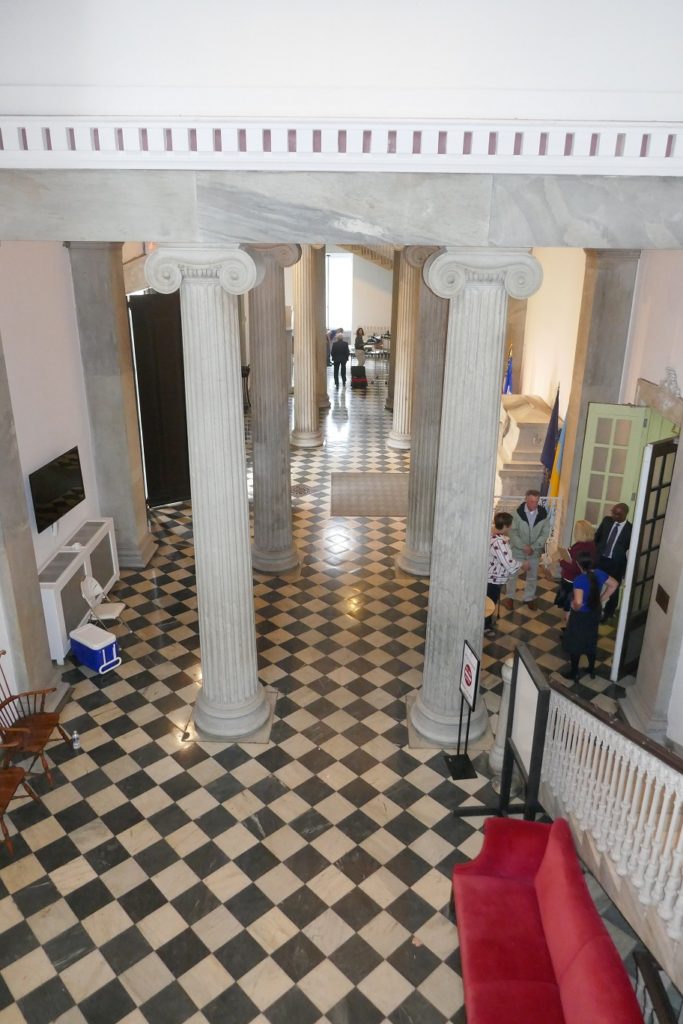
What’s Next
While Girard continues with their project, I should note that the PHMC’s Keystone application opens for the 2019-2020 round on December 1st. Search for PHMC programs on the Pennsylvania Department of Community and Economic Development’s Electronic Single Application for Assistance. Access to the Electronic Single Application for Assistance may be found here: https://www.esa.dced.state.pa.us/login.aspx?var=5
If you are part of a non-profit organization or entity of local government that operates a historic building and think that the Keystone Grant Program would be a good partner, join us for an informative webinar on Wednesday, January 22nd, 2020 at 2 PM to learn all the ins and outs of the grant program.
Remember, applications are due March 2, 2020 this year!
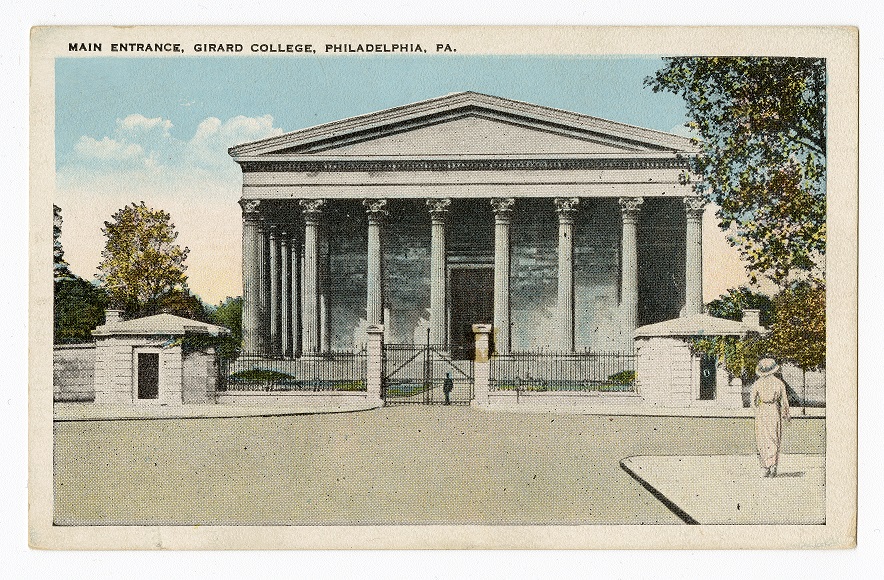
Thank you for this informative article, Karen! We were so pleased that you visited with us. Founders Hall is an amazing space & we deeply appreciate the support & stewardship the you & PHMC have provided Girard College. We look forward to seeing you again in the near future.